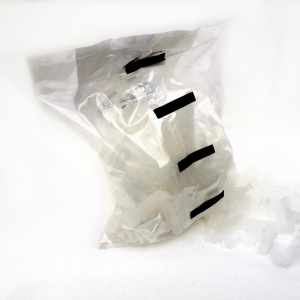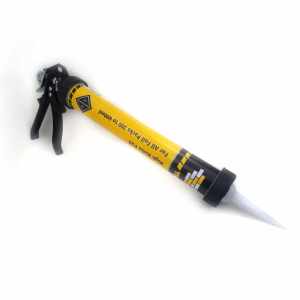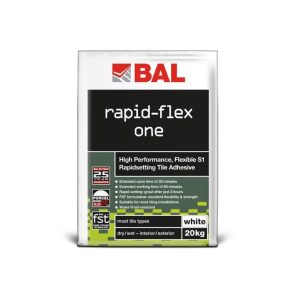What are 'Brick Slip Adhesives'?
One of the most common questions we hear is ‘how do I stick them to the wall’ and choosing the right brick slip adhesive can be confusing if you have not installed brick slips before. This guide should help you but if you have a doubt as to what you should use please call our office and we will help you choose the right brick slip adhesives.
Types of brick slip adhesives
There are two major categories of adhesive:
- Cement based (very similar to tile adhesive)
- Epoxy based (oil based similar to mastic)
The use of either depends on the substrate or wall material your are going to be bonding them to and in special situations the environment of the installation.
As with all adhesive applications the surface you are bonding to must be clean, dry and free of friable material (not falling apart). You may have to prepare bad substrates either by skimming them or boarding them out to get to a good surface in preparation for adhesion.
Non-porous surfaces
If the surface you are trying to stick brick slips to will not absorb water then you will have to look at using an epoxy adhesive.
We offer Silane epoxy which is a one part high grab MS Polymer adhesive suitable for bonding to nearly any substrate.

Generally epoxy glue is more expensive to use per square meter but is faster to cure and does not involve wet trades making them simpler to use.
Things to be careful of when using epoxy brick slip adhesives
- Our Silane Adhesive relies on moisture in the air for it to cure so you should not try stick slips when the temperature is 5ºC and dropping.
- The surface, if wet from i.e. overnight dew, should be dried. This is particularly a problem when using a non-porous surface such as a plastic tracking sheet.
- Our silane adhesive is extremely high grab and you only need a small bead on the reverse. Sometimes if you are bonding thicker, heavier slips you may need to apply more.
Once you know what your substrate is made of you will then be able to decide what type of adhesive you can use
Porous surfaces
If the surface you are planning on sticking slips to can absorb water then you can use a cement based or epoxy based adhesive.
Cement based brick slip adhesives are usually cheaper per square meter and readily available from local building supply companies.
We offer BAL Rapidflex One which is a wall tile adhesive meant for heavy porcelain tiles. The word ‘flex’ in the title usually indicates that the wall tile adhesive is polymer modified and therefore has a higher ‘grab’ than standard rapidset adhesive.

We do not recommend the use of brick laying mortar to fix brick slips as the grab is too low.
Is my surface porous?
In general most cement based boards, breezeblock, base renders and bricks are absorbant.
In general glazed tiles and man-made oil-based materials are NOT absorbant.
There are always exceptions to the rules though so how can you find out or test to see?
If you bought the product you should seek professional advice from the manufacturer but if not you can try a small area and see if the adhesive bonds sufficiently.
Things to be careful of when using wall tile adhesive
- Mix your brick slip adhesives accurately to ensure the right consistency and mix it with a paddle attachment to ensure consistent blending.
- Only mix a small amount at a time – it cures very quickly and you should start with small amounts and build up as your speed of application improves with practise.
- If your adhesive is too wet, your slips are heavier/thicker than usual or you try to go up too fast vertically you may find the slips start to ‘float’ down the wall. You can use support rails to enable you to work faster vertically which would be removed and back filled when the rest of the area has cured.
- Use levelling lines or mark the area well if you are not using a tracking system.
The information provided by Matclad Limited ("we", "us", "our") on www.matclad.co.uk (the "Site") is for general informational purposes only. All information on the Site is provided in good faith, however we make no representation or warranty of any kind, express or implied, regarding the accuracy, adequacy, validity, reliability, availability or completeness of any information on the Site.
Read our Terms and Conditions of Sale







